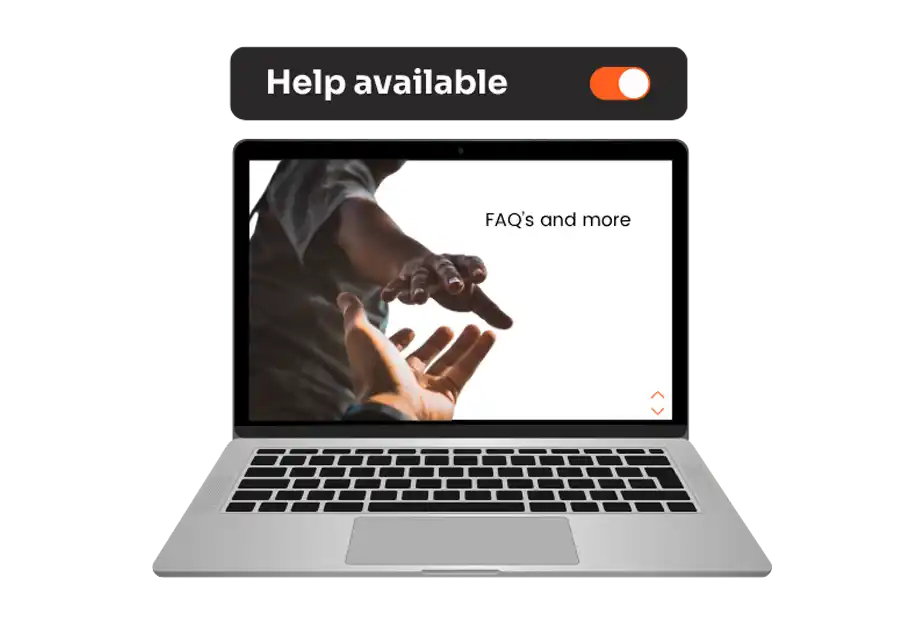Need Help?
Start Here
From setting up your event to making sure everything runs smoothly, we’re here to help you get the most out of Interprefy. Explore our knowledge base, find answers to common queries, and connect with our team. Whether it's language setup, live translation, or integrations, we’ve got you covered.


Interprefy Knowledge Base
Why Use It?
Accessible anytime, the Interprefy Knowledge Base empowers users to find accurate information quickly, without needing to wait for direct assistance. Whether you're preparing for a live event or simply exploring how our solutions work, it’s a reliable resource to help you work more efficiently and confidently with Interprefy.
Frequently Asked Questions
Remote Simultaneous Interpretation (RSI) FAQ's
Unlike traditional providers, Interprefy combines a state-of-the-art RSI platform with a global network of professional interpreters and 24/7 technical and project support. Our platform integrates with 80+ meeting and event platforms (from MS Teams, Zoom, and Google Meet to ON24) and can connect seamlessly with your AV equipment and live event infrastructure, making it uniquely flexible for onsite, hybrid and virtual formats. All interpreters are certified through our rigorous “Interprefy Approved” training, which includes platform-training, equipment testing and ongoing performance review to ensure maximum efficiency and accuracy. We also provide full media services for post-event evergreen content. Explore how Interprefy simplifies multilingual events.
RSI dramatically reduces costs and logistics by eliminating the need for physical booths, equipment, and interpreter travel. It enables organisers to work with top interpreters worldwide and deliver premium interpretation across any event platform. Additionally, RSI lowers your event’s carbon footprint while increasing flexibility and scalability.
Interprefy’s RSI solution meets the highest quality and security standards. All interpreters are carefully vetted and supported by dedicated technical and project teams to guarantee seamless event delivery. The platform is ISO 27001 certified and GDPR compliant, ensuring that all customer and event data is handled securely and responsibly. Data is never shared with third parties, and all user access is protected by two-factor authentication (2FA) to prevent unauthorized entry. With continuous monitoring and 24/7 support, organisers can trust Interprefy to deliver secure, stable, and high-quality multilingual communication every time. Learn more about our security and compliance standards.
AI Speech Translator FAQ's
Unlike other providers, Interprefy combines cutting-edge AI technology with deep multilingual event expertise to deliver exceptional accuracy, reliability, and security. Our platform is purpose-built for live event conditions, featuring redundant infrastructure to guarantee low latency and uninterrupted performance — even during high-demand sessions. With enterprise-grade data protection (ISO 27001 certified, GDPR compliant, end-to-end encrypted), Interprefy ensures your content and communications are always secure. It integrates seamlessly with 80+ leading meeting and event platforms as well as on-site AV equipment, making setup effortless for organisers and AV partners alike. Supported by a dedicated team of project managers, remote technicians, and media specialists, Interprefy provides not just technology but a complete professional service — from pre-event preparation to post-event media production. Experience the difference that precision, security, and expert support make. Read how The Super Patch Company scaled multilingual engagement with Interprefy AI.
Interprefy’s AI Speech Translation delivers high-quality speech-to-speech or speech-to-text translations instantly at a fraction of the cost of traditional interpretation. This scalability allows event organisers to extend language access to larger audiences, more sessions, and more languages than ever before. With flexible pricing options tailored to any event size or budget, Interprefy helps you break communication barriers and stay compliant without breaking the bank.
Interprefys AI leverages the latest industry-leading models, capable of recognising a wide range of accents, dialects, and speech variations with impressive accuracy. It also allows organisers to enhance performance using our custom vocabulary feature, which trains the platform to recognise event-specific terms, acronyms, and speaker names for more precise translations. For sessions that demand additional nuance or cultural sensitivity, many clients choose a hybrid setup, combining AI with professional interpreters. This approach ensures both efficiency and linguistic accuracy across every event.
Absolutely. Interprefy places data security and privacy at the core of every solution. Interprefy AI Speech Translation is fully GDPR compliant and ISO 27001 certified, ensuring that all data is handled, processed, and stored according to the highest international standards. Data is never shared with third parties, and is protected by end-to-end encryption and two-factor authentication (2FA). Clients maintain full control over their information, with options to request data deletion, retention reports, or custom compliance documentation at any time. You can learn more about our security commitments and certifications in our Trust Center or get in touch to discuss your organisation’s specific compliance needs.
Multilingual Captions & Subtitles FAQ's
Live captions and subtitles are ideal for organisations that prioritise accessibility, inclusion, and global reach. They ensure equal access for deaf or hard-of-hearing participants, support non-native speakers, and make content easier to follow in noisy environments or across diverse audiences. Beyond enhancing engagement, Interprefy’s captioning solutions help organisations meet accessibility and compliance requirements, including EAA or WCAG and ADA standards for digital events. Our captions and subtitles can be added to webinars, conferences, hybrid events, or live streams — making every event more inclusive and compliant by design.
Unlike other providers, Interprefy’s live captioning and subtitling solution is purpose-built for professional events, combining advanced AI speech recognition with robust event infrastructure for exceptional accuracy and real-time performance. Captions and subtitles can be displayed anywhere your audience needs them — on event screens, laptops, or mobile devices — making content accessible and easy to follow for every participant. Our custom vocabulary feature ensures event-specific terms, acronyms, and speaker names are captured accurately, while 24/7 expert technical support and project management guarantee smooth delivery from start to finish. Interprefy also offers post-event media services, such as adding captions to recordings for on-demand content, extending accessibility long after the event ends.
Interprefy’s live captions deliver exceptional accuracy, powered by advanced AI speech recognition and refined for live event conditions. Under optimal audio settings, accuracy levels can achieve over 90% accuracy, as measured by the industry-standard Word Error Rate (WER). Real-world performance depends on factors such as sound quality, accent, and background noise. To maximise precision, organisers can use Interprefy’s custom vocabulary feature and benefit from expert event support before and during sessions. Together, these tools ensure captions remain clear, consistent, and accessible across any event.
Yes. Interprefy’s live captions and multilingual subtitles can be added to any event format—whether on-site, hybrid, virtual, or fully live-streamed. Captions can be embedded directly into your event platform, live stream, or displayed on venue screens, ensuring every participant can follow along in real time. Our solution integrates easily with leading event and streaming platforms such as Zoom, Microsoft Teams, and YouTube Live, offering flexibility and accessibility without complex setup. With expert technical support and custom configuration, Interprefy ensures your captions run smoothly across all channels.
Interprefy’s live captions and subtitles are AI-generated, making them a highly cost-effective solution for adding real-time accessibility to any event. Pricing depends on factors such as event duration, number of languages, and streaming or platform requirements. Because there are no interpreter or transcriptionist costs, organisers can scale multilingual access across more sessions and audiences without exceeding their budgets. Interprefy’s flexible pricing options make inclusive, multilingual events more affordable than ever.

Let’s Plan Your Next Multilingual Event
Bring the magic of Interprefy to your upcoming conference or event. Our team is ready to assist you every step of the way.

